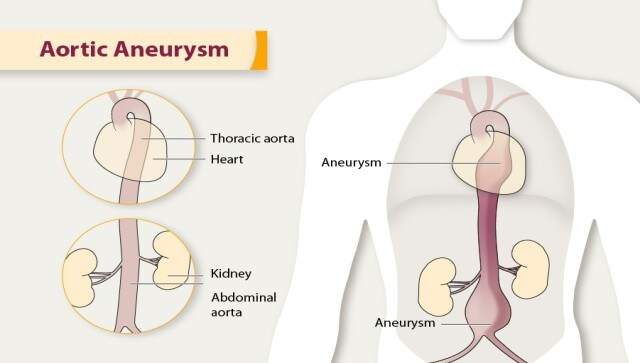The FIFA World Cup in Qatar has generated a lot of news since it began. Last Friday, as Argentina and the Netherlands laid it all out during the quarterfinals of the tournament, the sports world was stunned into silence when prominent football journalist
Grand Wahl
fell ill in the media box and was declared dead after being taken to the hospital. On Wednesday, Wahl’s wife, Dr Celine Gounder, revealed that the scribe, who first made news in Qatar for being detained for wearing a rainbow shirt, died after an
aortic aneurysm ruptured
. Gounder, an infectious disease specialist, wrote in a statement on Wahl’s Substack, “It’s just one of those things that had been likely brewing for years.” “The chest pressure he experienced shortly before his death may have represented the initial symptoms. No amount of CPR or shocks would have saved him. His death was unrelated to COVID-19. His death was unrelated to vaccination status. There was nothing nefarious about his death,” she stated. [caption id=“attachment_11812231” align=“alignnone” width=“640”] A tribute to Grant Wahl before the World Cup quarterfinal soccer match between England and France, at the Al Bayt Stadium in Qatar. AP[/caption] Here’s a better understanding of what an aortic aneurysm is and who’s at risk of suffering from it. Also read: What will happen to Qatar’s new stadiums after the World Cup?
Aortic Aneurysm, explained Deemed a ‘silent killer’, a ruptured aortic aneurysm is a deadly medical condition. According to the National Heart, Lung, and Blood Institute (NHLBI), an aortic aneurysm is a “balloon-like bulge that occurs in the aorta, the main artery carrying oxygen-rich blood to your body.” The primary artery that distributes blood from the heart to the body’s tissues and the brain is the aorta. A balloon-like bulge in the aorta is called an aortic aneurysm. When an artery has an aneurysm, blood can separate or dissect its walls, which can lead to the rupture of the artery. Thus, an ascending aortic aneurysm is when a portion of the aorta bulges and weakens before it curves into the aortic arch. According to the Mayo Clinic, aneurysms can develop anywhere along the aorta, however, most commonly occur in the area of the belly. They often develop slowly over time, like Wahl’s, and are hard to detect. America’s Centers for Disease Control and Prevention state that in 2019 an aortic aneurysm was the cause of death in 9,904 cases. About 59 per cent of these deaths occurred among men. [caption id=“attachment_11812191” align=“alignnone” width=“640”]
A tribute to Grant Wahl before the World Cup quarterfinal soccer match between England and France, at the Al Bayt Stadium in Qatar. AP[/caption] Here’s a better understanding of what an aortic aneurysm is and who’s at risk of suffering from it. Also read: What will happen to Qatar’s new stadiums after the World Cup?
Aortic Aneurysm, explained Deemed a ‘silent killer’, a ruptured aortic aneurysm is a deadly medical condition. According to the National Heart, Lung, and Blood Institute (NHLBI), an aortic aneurysm is a “balloon-like bulge that occurs in the aorta, the main artery carrying oxygen-rich blood to your body.” The primary artery that distributes blood from the heart to the body’s tissues and the brain is the aorta. A balloon-like bulge in the aorta is called an aortic aneurysm. When an artery has an aneurysm, blood can separate or dissect its walls, which can lead to the rupture of the artery. Thus, an ascending aortic aneurysm is when a portion of the aorta bulges and weakens before it curves into the aortic arch. According to the Mayo Clinic, aneurysms can develop anywhere along the aorta, however, most commonly occur in the area of the belly. They often develop slowly over time, like Wahl’s, and are hard to detect. America’s Centers for Disease Control and Prevention state that in 2019 an aortic aneurysm was the cause of death in 9,904 cases. About 59 per cent of these deaths occurred among men. [caption id=“attachment_11812191” align=“alignnone” width=“640”] Representative image of aortic aneurysm. Centers for Disease Control and Prevention (CDC)[/caption] This medical condition is hard to detect and hence, the ‘silent killer’ tag. In fact, in Wahl’s case just days before his collapse, he had spoken about feeling ill and being given antibiotics for it. “My body finally broke down on me,” he had written. “Three weeks of little sleep, high stress and lots of work can do that to you. What had been a cold over the last 10 days turned into something more severe on the night of the USA-Netherlands game, and I could feel my upper chest take on a new level of pressure and discomfort.” Also read: How FIFA World Cup host Qatar is seeking to change mindset on Islam
Symptoms According to the NHLBI, the types of symptoms one can have depends on where the aneurysm is and what is its size. Possible symptoms are difficult or painful swallowing, difficulty in breathing, feeling full, hoarseness, pain in the neck, jaw, back, chest, stomach or shoulder, a pulsating or throbbing, shortness of breath, or swelling of the face, neck, or arms. While signs of a rupture in the aorta are light-headedness, rapid heart rate, and sudden, severe pain in your stomach area, chest or back. People at risk Since an aortic aneurysm is a rare medical condition, there is no particular routine screening test recommended. High blood pressure, cholesterol, hardened arteries (atherosclerosis) and smoking, according to doctors, enhance a patient’s risk of developing an aortic aneurysm. According to CDC, over 75 per cent of all abdominal aortic aneurysms have had a smoking history. The US Preventive Services Task Force has recommended that men aged between 65-and-75-years old who have smoked should get an ultrasound screening for abdominal aortic aneurysms, even if they have no symptoms. One can reduce the risk of developing an aortic aneurysm by building a healthy lifestyle, maintaining a healthy weight, avoiding use of tobacco products or smoking. Screening and diagnostic tests As per NHLBI, screening for an aortic aneurysm is generally done using ultrasound. The test provides information about the size of aorta. If it is bigger than normal, the patient will have to get another screening to check for growth. Echocardiography provides information about the size of the aortic aneurysm and about the thoracic aorta, which is close to heart. While MRI provides details about the size, shape, and location of the aneurysm. With inputs from agencies Read all the Latest News
, Trending News
, Cricket News
, Bollywood News
, India News
and Entertainment News
here. Follow us on
Facebook
,
Twitter
and
Instagram
.
Representative image of aortic aneurysm. Centers for Disease Control and Prevention (CDC)[/caption] This medical condition is hard to detect and hence, the ‘silent killer’ tag. In fact, in Wahl’s case just days before his collapse, he had spoken about feeling ill and being given antibiotics for it. “My body finally broke down on me,” he had written. “Three weeks of little sleep, high stress and lots of work can do that to you. What had been a cold over the last 10 days turned into something more severe on the night of the USA-Netherlands game, and I could feel my upper chest take on a new level of pressure and discomfort.” Also read: How FIFA World Cup host Qatar is seeking to change mindset on Islam
Symptoms According to the NHLBI, the types of symptoms one can have depends on where the aneurysm is and what is its size. Possible symptoms are difficult or painful swallowing, difficulty in breathing, feeling full, hoarseness, pain in the neck, jaw, back, chest, stomach or shoulder, a pulsating or throbbing, shortness of breath, or swelling of the face, neck, or arms. While signs of a rupture in the aorta are light-headedness, rapid heart rate, and sudden, severe pain in your stomach area, chest or back. People at risk Since an aortic aneurysm is a rare medical condition, there is no particular routine screening test recommended. High blood pressure, cholesterol, hardened arteries (atherosclerosis) and smoking, according to doctors, enhance a patient’s risk of developing an aortic aneurysm. According to CDC, over 75 per cent of all abdominal aortic aneurysms have had a smoking history. The US Preventive Services Task Force has recommended that men aged between 65-and-75-years old who have smoked should get an ultrasound screening for abdominal aortic aneurysms, even if they have no symptoms. One can reduce the risk of developing an aortic aneurysm by building a healthy lifestyle, maintaining a healthy weight, avoiding use of tobacco products or smoking. Screening and diagnostic tests As per NHLBI, screening for an aortic aneurysm is generally done using ultrasound. The test provides information about the size of aorta. If it is bigger than normal, the patient will have to get another screening to check for growth. Echocardiography provides information about the size of the aortic aneurysm and about the thoracic aorta, which is close to heart. While MRI provides details about the size, shape, and location of the aneurysm. With inputs from agencies Read all the Latest News
, Trending News
, Cricket News
, Bollywood News
, India News
and Entertainment News
here. Follow us on
Facebook
,
Twitter
and
Instagram
.
US journalist Grant Wahl dies of ruptured aortic aneurysm during FIFA World Cup 2022: What is this ‘silent killer'?
FP Explainers
• December 15, 2022, 12:14:34 IST
Prominent football journalist Grant Wahl died from a ruptured aortic aneurysm on 9 December while covering the quarterfinals of the FIFA World Cup in Qatar. A ruptured ascending aortic aneurysm is hard to detect. People with high-blood pressure and a smoking past are more prone to this condition
Advertisement
)
End of Article